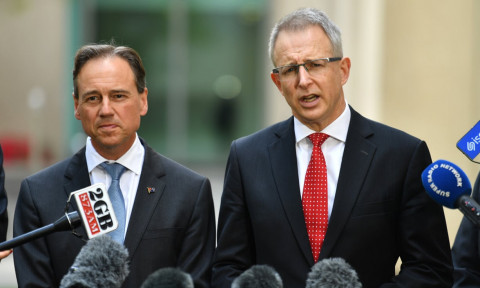
Paul Fletcher says guidelines developed in consultation with people living with autism, researchers and doctors
New national guidelines for diagnosing autism announced by the federal government on Tuesday will have no impact on those with autism previously deemed eligible for funding under the National Disability Insurance Scheme (NDIS), the minister for social services, Paul Fletcher, has said.
The guidelines, which aim to make assessment and diagnosis of autism more consistent, will not make it more difficult for people to qualify for the NDIS in future, Fletcher added.
Autism tests vary between states and territories, with no established biological test available to diagnose the condition. Instead, diagnosis is based on the judgment of doctors, who assess the patient’s behaviours and developmental conditions. This inconsistency prompted the National Disability Insurance Agency and the Cooperative Research Centre for Living with Autism to develop the first national guidelines.
Fletcher told the ABC the guidelines were developed in consultation with people living with autism, researchers and doctors, and had been approved by the National Health and Medical Research Council.
“It does not change what the NDIS does and indeed it may well be that there are people who, today, would not be diagnosed who will be diagnosed,” he said. “That will be a judgment for clinicians and medical profession and the NDIS will continue to do what it does, which is make an assessment of the impairment that somebody suffers as a result of a disability. Is it likely to be permanent and lifelong? Is it significant? What impact does it have on the functioning?”
Dr Wenn Lawson, the co-chair of the Australian Autism Research Council, said a consistent assessment and diagnosis process for autism meant people would be able to access more appropriate supports.
“I cannot stress enough the impact this will make,” he said. “Appropriate assessment identifies what an individual needs to enable access to learning and to life. These requirements must be implemented to enable an individual to be ‘connected’ rather than closed off because their needs are passed over. This Australian-first guideline provides a unified policy.”
About 164,000 Australians, including 136,000 children and young people under the age of 25, have autism spectrum disorder, a 79% increase from 2009.